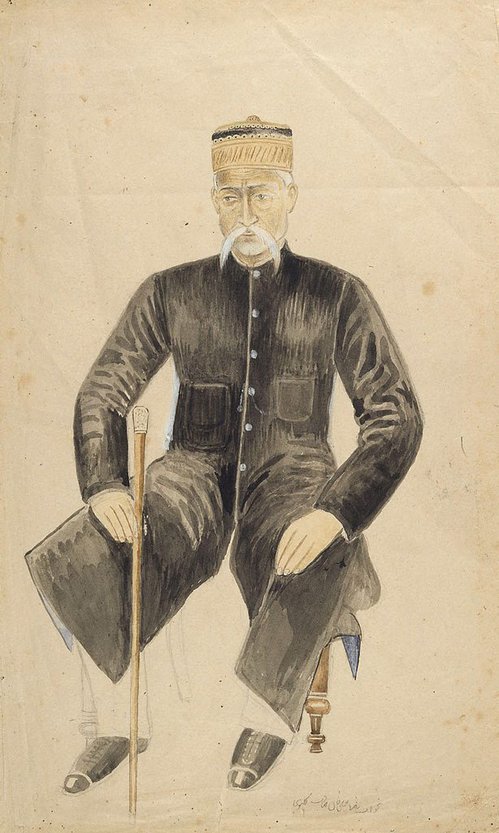Title
Gate of the tomb of Akbar, Sikandra, Agra, India
18th century-19th century
Artist
Company style
late 18th century – late 19th century
-
Details
- Other Title
- Mughal architecture
- Place where the work was made
-
India
- Date
- 18th century-19th century
- Media category
- Painting
- Materials used
- opaque watercolour on paper
- Dimensions
- 26.8 x 34.2 cm frame
- Credit
- Gift of Dr Jim Masselos 2022
- Location
- Not on display
- Accession number
- 291.2022
- Copyright
- Artist information
-
Company style
Works in the collection
- Share
-
-
About
After the death of the great Mughal emperor, Abu'l-Fath Jalal-ud-din Muhammad Akbar (15 October 1542] – 27 October 1605), his son Jahangir, built a tomb for his father that was completed in 1613 and remains a monument of national significance.
In the late 18th century as the Mughal empire went into decline, British presence and power expanded, ultimately overthrowing both the Mughal and the Rajput rulers of India. The English East India Company established their own provincial townships and new migrants arrived, including a number of artists. The English interest in the picturesque, including views of the Indian countryside, architectural monuments and their ruins were popular subjects of English artists working in India and Indian artists painting for British clients.
The gate of Akbar’s tomb, for example, was the subject of William Hodges’ 1787 engraving, Thomas Daniell’s hand coloured aquatint c. 1800, photographs from about 1860 and Indian watercolours, painted in what is termed ‘Company Style’, a style developed to meet the needs of a British clientele, many of whom were employees of the East India Company. In 1905, George Curzon the Viceroy of India, made extensive repairs to the tomb including the completion of the four minarets, that as seen here ascend into the sky without their finials. It remains uncertain as to whether the minarets were not completed at the time of construction or where instead damaged during a raid by a Jat army in 1691.
-
Places
Where the work was made
India




